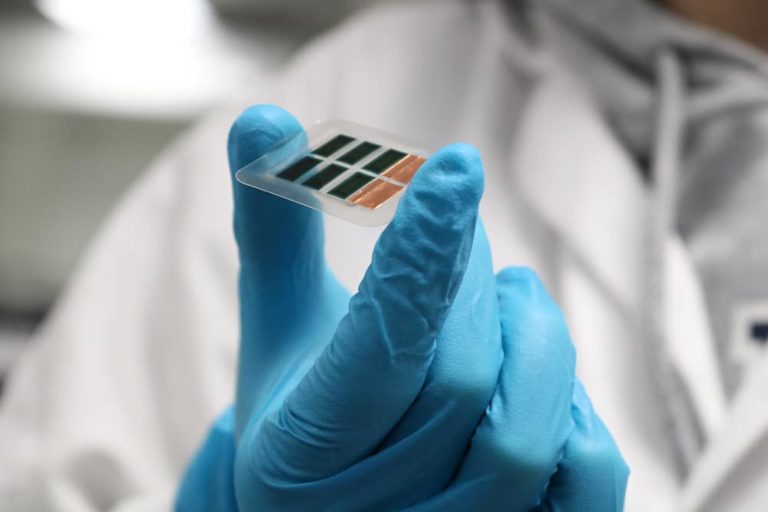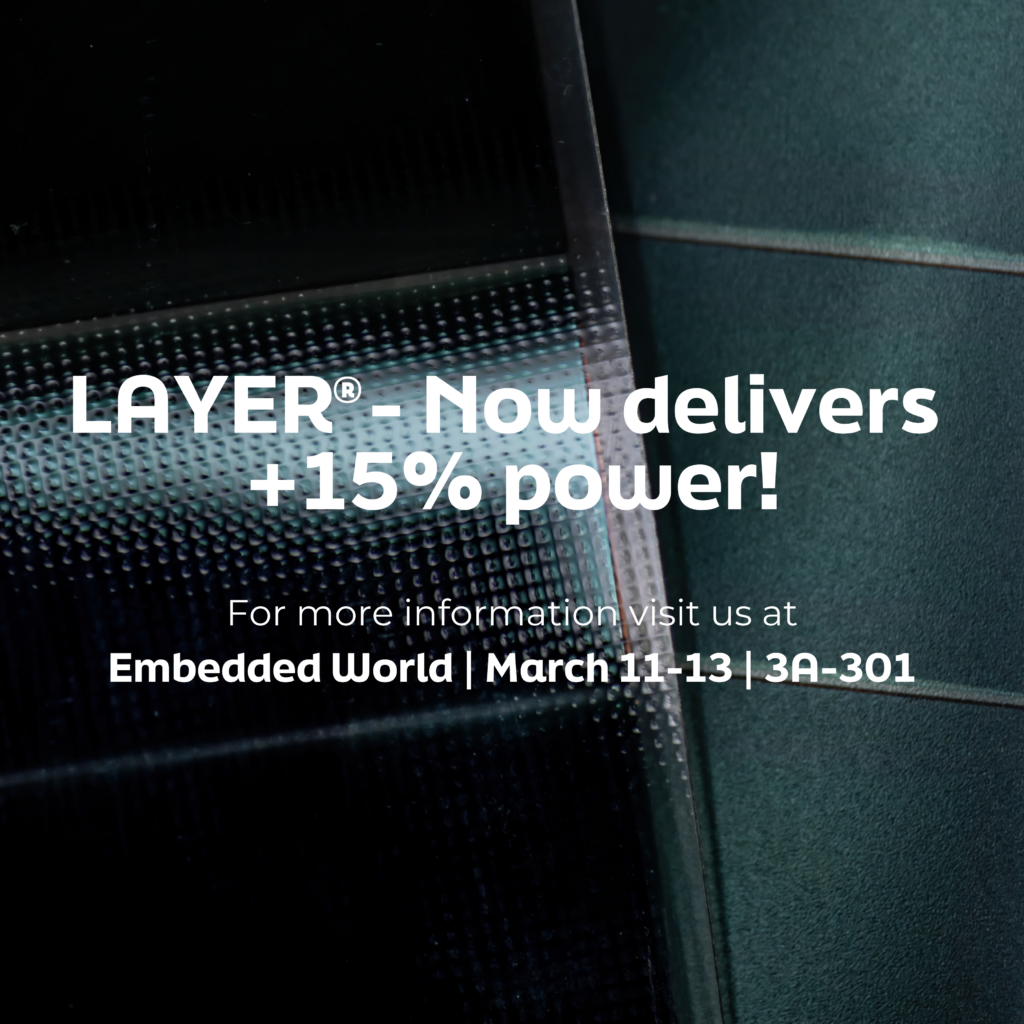Dracula Technologies achieved a new fill factor record for an OPV Module with full inkjet-printed layers. These modules with small area target indoor application.
LAYER® technology consists of printing different layers, each has different physical properties.
The “fill factor”, more commonly known by its abbreviation “FF”, is a parameter which, in conjunction with Voc and Isc, determines the maximum power from a solar cell.
A small-area flexible module (active area = 1.5 cm2) delivering a power of 43 μW/cm2 at 1000 lux under indoor lighting conditions using LED illumination. The light intensities are measured carefully using a suitable system.
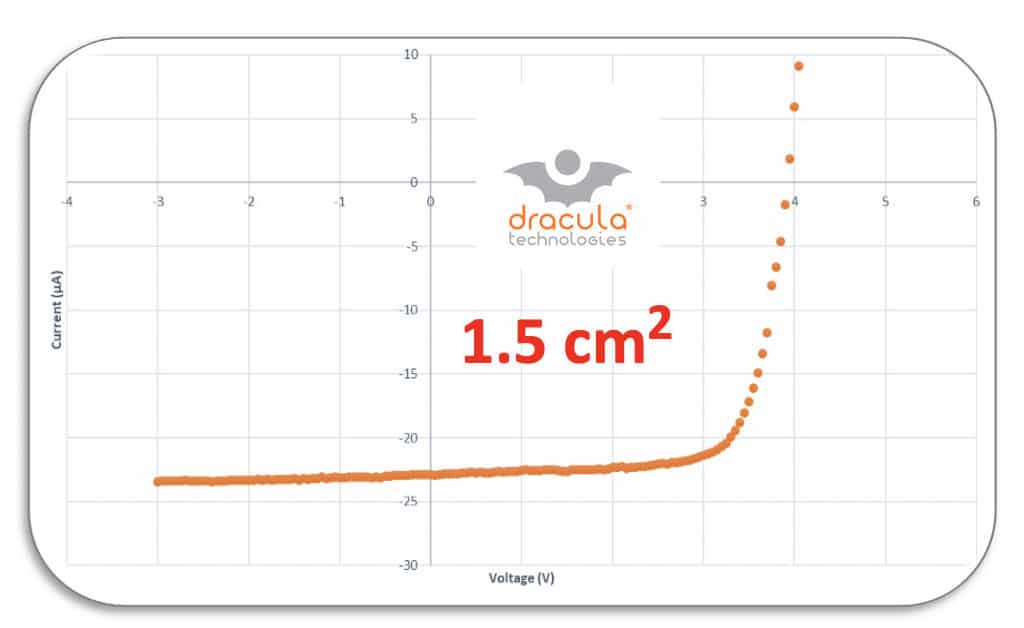
Equally important, a high Fill Factor of 74 % was achieved for blends processed in ambient from environmentally friendly solvents.
“It’s currently the highest value reported to date for all inkjet-printed OPV module” CTO Sadok ben Dkhil.
Small size OPV modules have unique advantages, including solution processibility, flexibility, and lightweight tailorable design. Hence, they are considered the best solution for indoor light-harvesting applications and more suitable with IOT devices having low power consumption.
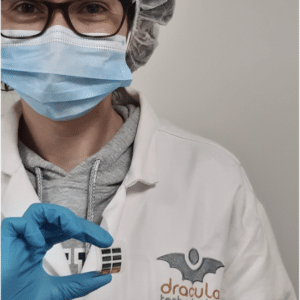
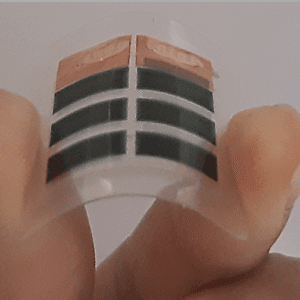
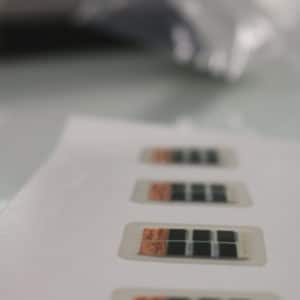
As a reminder, you can pre-order our demokits to perform quick and dirty tests on your side.
